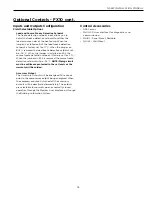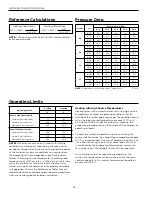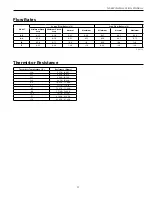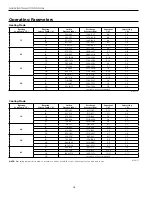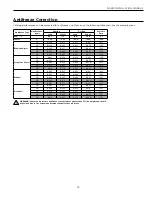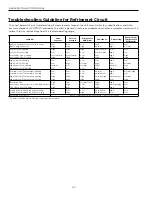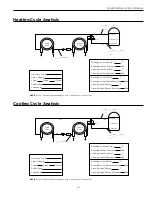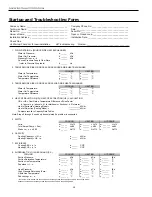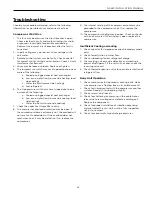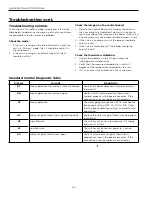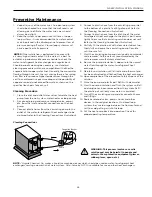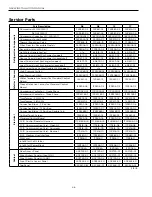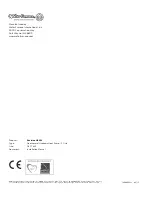
43
NSKW INSTALLATION MANUAL
Troubleshooting
Should a major problem develop, refer to the following
information for possible causes and corrective steps:
Compressor Won’t Run
1. The fuse may be blown or the circuit breaker is open.
Check electrical circuits and motor windings for shorts
or grounds. Investigate for possible overloading.
Replace fuse or reset circuit breakers after the fault is
corrected.
2. Supply voltage may be too low. Check voltage with a
volt meter.
3. Remote control system may be faulty. Check aquastat
for correct wiring, setting and calibration. Check 24-volt
transformer for burnout.
4. Wires may be loose or broken. Replace or tighten.
5. The low pressure switch may have tripped due to one or
more of the following:
a. Fouled or plugged coaxial heat exchangers
b. Low or no water flow (source side heating, load
side
cooling)
c. Water too cold (source side heating)
d.
Low
refrigerant
6. The high pressure switch may have tripped due to one
or more of the following:
a. Fouled or plugged coaxial heat exchanger
b. Low or no water flow (source side cooling, load
side
heating)
c. Water too warm (source side cooling)
7. Check the capacitor (Single Phase only).
8. The compressor overload protection may be open. If
the compressor dome is extremely hot, the overload will
not reset until cooled down. If the overload does not
reset when cool, it may be defective. If so, replace the
compressor.
9. The internal winding of the compressor motor may be
grounded to the compressor shell. If so, replace the
compressor.
10. The compressor winding may be open. Check continuity
with an ohm meter. If the winding is open, replace the
compressor.
Insufficient Cooling or Heating
1. Check aquastat for improper location (secondary mode
only).
2. Check for restriction in water flow.
3. Check subcooling for low refrigerant charge.
4. The reversing valve may be defective and creating a
bypass of refrigerant. If the unit will not cool, check the
reversing valve coil.
5. Check thermal expansion valve for possible restriction of
refrigerant flow.
Noisy Unit Operation
1. Check compressor for loosened mounting bolts. Make
sure compressor is floating free on its isolator mounts.
2. Check for tubing contact with the compressor or other
surfaces. Readjust it by bending slightly.
3. Check screws on all panels.
4. Check for chattering or humming in the contactor or
relays due to low voltage or a defective holding coil.
Replace the component.
5. Check for proper installation of vibration absorbing
material under the unit. Unit must be fully supported,
not just on corners.
6. Check for abnormally high discharge pressures.







